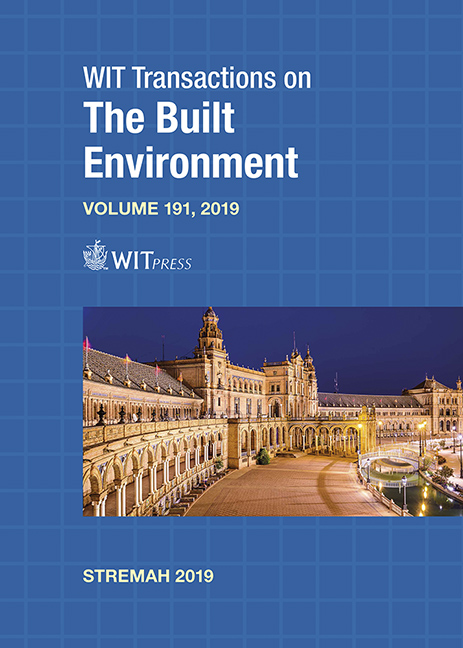TRACES AND SCARS: THE RECONSTRUCTION OF MADRID’S CIUDAD UNIVERSITARIA AFTER THE SPANISH CIVIL WAR
Price
Free (open access)
Transaction
Volume
191
Pages
12
Page Range
211 - 222
Published
2019
Paper DOI
10.2495/STR190181
Copyright
WIT Press
Author(s)
JARA MUÑOZ HERNÁNDEZ, JOSÉ LUIS GONZÁLEZ CASAS
Abstract
Madrid’s Ciudad Universitaria is a clear example of the different political era that existed in Spain during the 20th century. The project for the campus was first designed during the 1920s under the reign of Alfonso XIII, then developed throughout Spain’s Second Republic, severely damaged during the Civil War, and finally rebuilt during Franco’s dictatorship, continuing its expansion until the present. Today, it is also one of the most interesting examples of Spanish architectural heritage, dating from the 20th century. After the partial destruction of the campus during the war, the idea of its reconstruction was imposed over other theses that defended the conservation of the ruins as symbolic and evocative elements. We can still see this today in one of the great models of that time that has been preserved. During the process of restoration of the university complex, the new regime aimed to rebuild Ciudad Universitaria, given its enormous symbolic significance. Parts of the buildings were reconstructed according to the original project, while others were modified and some of them disappeared. The purpose of this study is to analyze the different ways of reconstruction that were carried out on campus from a self-made inventory of the solution implemented on each building. This will allow us to conclude that, to a large extent, the decision taken in the reconstruction was very much related to the position that each building occupied with regard to the war front, and thus the consequent degree of destruction to which it was exposed. The traces of the destruction and the subsequent reconstruction have remained visible over time in most faculties and technical schools. A close observation, with the aid of graphic tools such as drawings or photography, can help us understand better the footprints and traces that are still around us today but which become invisible to the eye since they are not adequately understood.
Keywords
heritage, 20th century, Madrid, university, civil war, reconstruction, drawing, photography




